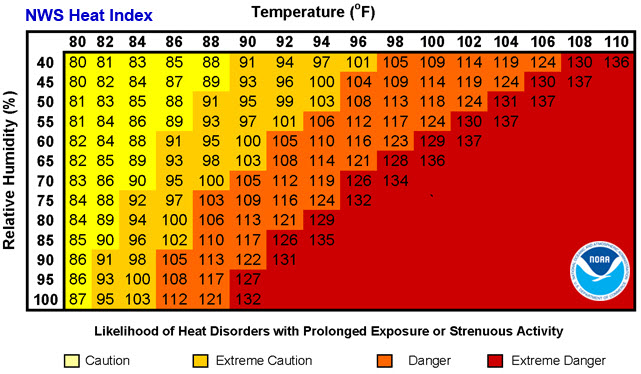Summer is in full swing, and many parts of the country are experiencing high temperatures, and occupational heat exposures and reportable incidents of occupational heat stress are on the rise. Currently there is no specific regulation or standard under OSHA regarding heat illnesses; however, in June the agency announced it intends to initiate a rulemaking process that will target indoor workers without climate-controlled environments including manufacturing, warehouses, and distribution centers. Currently, OSHA has cited employers for heat-related injuries and illnesses among workers under the General Duty Clause, Section 5(a)(1) of the Occupational Safety and Health Act of 1970, which states employers are required to provide their employees with a place of employment that "is free from recognized hazards that are causing or likely to cause death or serious harm to employees." OSHA considers heat-related hazards that are likely to cause death or serious bodily harm to be included within this aspect, and they specifically note that heat-related events such as heat illness and heat stroke are included in the injury reporting requirements. Some states, such as California, Minnesota, and Washington, have their own heat exposure standards.
Protecting Employees Working in Heat
For work in outdoor environments, understanding Heat Index and likelihood of heat-related illness with prolonged exposure or strenuous activity is essential to preventing heat-related illness. Per OSHA, the higher the heat index, the hotter the weather will feel, and the greater the risk that outdoor workers will experience heat-related illness[1]. OSHA points to NOAA’s Heat Index Chart, below, and warns that heat index values were devised for shady, light wind conditions, and exposure to full sunshine can increase heat index values by up to 15° Fahrenheit.

As noted above, protecting employees from occupational heat exposure falls under OSHA’s General Duty Clause. Since 2011, OSHA’s Heat Illness Prevention Campaign has elevated and improved awareness of and education on heat related illness occurring at work. In line with an organization’s duty to provide workplaces free of known safety hazards, OSHA expects that employers with workers exposed to high temperatures establish a complete heat illness prevention program, including aspects such as:
- Providing workers with water, rest and shade;
- Allowing new or returning workers to gradually increase workloads and take more frequent breaks as they acclimatize, or build a tolerance for working in the heat;
- Planning for emergencies and train workers on prevention; and
- Monitoring workers for signs of illness[2].
OSHA outlines more specific Protective Measures to Take at Each Risk Level here. General protective measures, dependent on heat index and corresponding risk level, include:
- Less than 91°F – Lower (Caution) Risk Level – requires basic heat safety and planning
- 91°F to 103°F – Moderate Risk Level – requires implementation of precautions and heightened awareness
- 103°F to 115°F – High Risk – requires additional precautions to protect workers
- More than 115°F – Very High to Extreme Risk – triggers even more aggressive protective measures[3].
What is Heat-Related Illness?
Heat-related illnesses occur when the body cannot get rid of excess heat and include heat stroke, heat exhaustion, rhabdomyolysis, heat syncope, heat cramps, and heat rash. Whether working outside or inside, professionally or at home, it is important to know the signs and symptoms of, and how to prevent and respond to heat-related illness.
We often check the temperature before we head outside for the day, but the temperature will only tell you part of the story. Have you ever gone outside when the thermometer says 70 degrees, but it really feels like 90? This is where the heat index comes into play. Heat index is a measure indicating the level of discomfort the average person is thought to experience as a result of the combined effects of the temperature and humidity of the air.
All heat-related illnesses are preventable. The good news for your site safety team is that the most severe heat-related illnesses are the most preventable. In the event that you or an employee fall ill while working in the heat, your team can refer to the table below as a reference to identify and respond to heat-related illnesses.
Training and Communication
As with most safety programs, ensuring that key elements of your heat illness prevention programs are communicated to employees early and often, through training, supervisor-led meetings, and interactive safety discussions, can go a long way in helping minimize heat-related illnesses among your workforce. Take advantage of existing communication mechanisms will help ensure employees understand the importance of being safe when working in heat.
References


.jpg?width=670&name=BBJ%20Heat%20Related%20Illnesses%20(Final).jpg)


